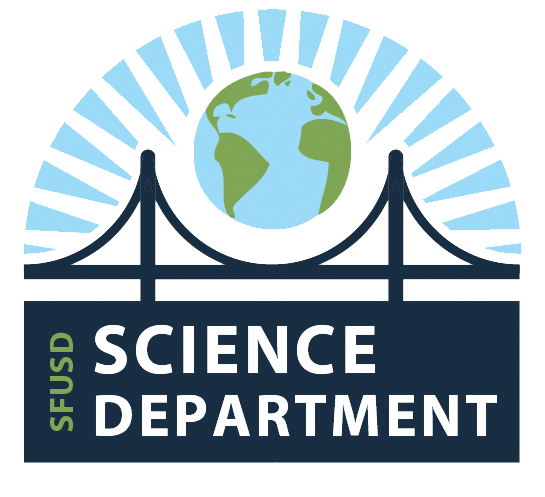
Overview
Fourth-grade students in SFUSD do, talk, read, and write to figure out how the world works. They engage in one hour of science instruction four times a week, starting with a five-lesson launch unit, then four 22-lesson content units. Alternate with history/social studies units throughout the year.

Students initiate science identities and foundational skills in Launch Unit 0 and then build on them and their content knowledge in the life science, physical science, and earth and space science units that follow.
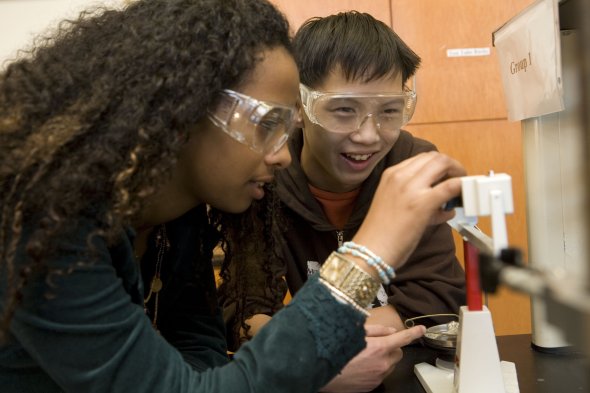
Prioritize using science to model a sense of awe and wonder about the natural and designed world, and guide students to ask questions, conduct investigations, and use their observations, data, and text to construct explanations and design solutions to problems.
Priority Standards Link to this section
What students will know, what students will do, and what thinking skills students will develop to apply and transfer scientific understandings that endure within the discipline, leverage deeper understandings, and/or support readiness for success at the next grade level. These are the standards that should anchor and drive instruction.
In fourth grade, focus on these critical areas:
Sciences & Engineering Practices
SEPs are behaviors scientists and engineers engage in to figure out and deepen their understanding of content. Fourth-grade students predominantly practice:
- Asking questions about what would happen if a variable is changed.
- Developing and using models to describe and predict phenomena.
- Engaging in argument from evidence to listen, evaluate, and compare competing ideas.
- Constructing explanations of what is observed
- Designing solutions to solve engineering problems.
Disciplinary Core Ideas
DCIs are the fundamental scientific ideas in the four domains: Life, Physical, Earth & Space Science, and Engineering.
(Continue to view the disciplinary core ideas students figure out through the four fourth-grade science units.)

I am a Scientist
Scientists observe, wonder, collaborate, and record their thinking in science notebooks.

Physical Science: Energy Conversions
All energy comes from a source. Energy can be transferred by electric currents to be converted into motion, sound, heat, or light.
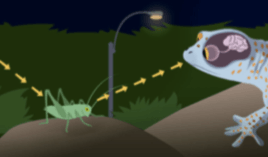
Life Science: Vision & Light
Animals’ internal and external structures help them get information about their environment that helps them survive.
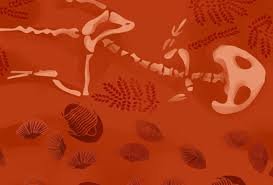
Earth Science: Earth’s Features
Different sediments form different layers of rock. Rocks are eroded by wind, water, plants, and ice to reveal evidence of past environments.
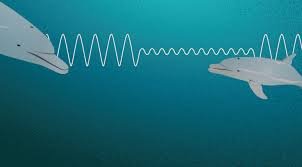
Physical Science: Waves, Energy, and Information
Sound energy travels in a pattern of motion called a wave.
Crosscutting Concepts
CCCs are thinking tools that help students connect the ideas they are learning to ideas used across all domains of science. Questions that guide fourth graders to think across domains include:
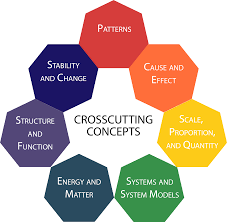
- Systems and System Models: Why did all the buzzers stop working when I added a third buzzer? (Energy Conversions)
- Structure and Function: How do structures in the eye help an animal see? (Vision and Light)
- Stability and Change: Why do you think the sedimentary rock layer is older than the layer above it? (Earth’s Features)
- Patterns: What patterns do you notice about how the rope moves when you make a wave? (Waves, Energy, and Information)
Instruction: Signature Elements Link to this section
Below are signature elements of SFUSD Science instruction that students should experience regularly throughout fourth grade as they develop as scientists.
Approach to Learning in Every Amplify Unit
- Engage in a Real World Problem
- Collect Evidence from multiple sources (through doing, talking, reading, writing, and visualizing)
- Construct Increasingly Complex Explanations
- Apply Knowledge to Solve a Different Problem
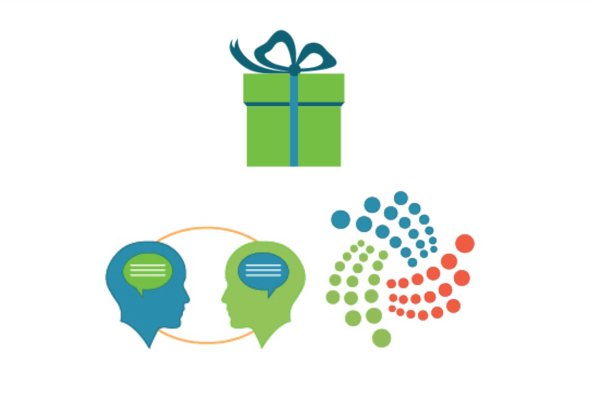
Science Norms
- Mistakes help us grow
- We talk to each other about science
- We can show science and engineering ideas in different ways
Science Notebooks
Science notebooks are a valuable thinking tool. They allow students to construct their understanding over time through drawing and writing, share their thinking with others, and develop language skills. They act as a storehouse for student observations, questions, and ideas throughout the year!
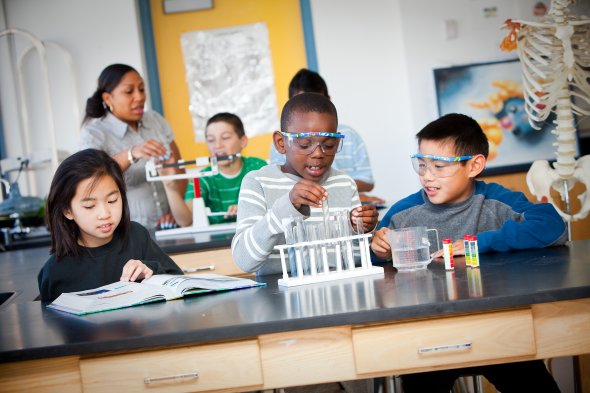
Collaboration
As scientists and engineers, fourth-grade students work with others while doing science. They carry out investigations, read and talk about science in pairs so that they can construct knowledge and develop language collaboratively.
Materials
Every fourth-grade classroom has a set of four science kits that are SFUSD curricular materials to teach science. Each kit has:
|
|
|
|
|
|
|
|
|
|
Each kit has: (1) a set of consumable items for student use that will be all used up during the unit. The consumable materials are replaced yearly through a spring ‘Refill Pack’ order process, and (2) a set of permanent items that are the kit's contents that remain with the kit and are only replaced if they are missing or broken. In addition, every classroom teacher has additional essential teaching materials through the Amplify digital platform. The Amplify digital platform can be accessed from the SFUSD Science Portal.
If you are missing anything from the list, please first contact your site administrator or designated support. If they are unable to resolve the issue promptly, please contact Renee Marcy from the SFUSD Science Team.
Budget permitting, the Science Department will replace science materials annually for each kit through an order process. Contact your Science Lead for more information.
If you are missing materials, refer to the Materials FAQ for guidance.
The fourth-grade Science Core Curriculum consists of 3 resources
|
|
|
|
|
|
|
|
|
Units
The opening science unit, Launch Unit 0, is five short lessons that support students to begin to build science identities and use a science notebook. The three subsequent science units are intended to engage fourth graders in a minimum of 60 minutes of science instruction four times a week. Each unit has 22 lessons that follow a single storyline. (Sometimes a lesson may take place over a few days.) Students build on their science identities and expand content knowledge in the life science, physical science, and Earth & space science units. Click on the videos below for a six-minute unit overview, or access the unit resources and documents in the unit links column.
Additional science unit materials and resources are available on the SFUSD Science Portal.
| Unit | Description | Video |
|---|---|---|
|
I Am a Scientist! |
The opening science unit, Launch Unit 0, is five short lessons that support students to begin to build science identities and a science community, and to use a science notebook. |
|
|
Energy Conversions
|
Students take on the role of systems engineers who are challenged to discover what parts of the electrical system make Ergstown vulnerable to blackouts in order to design improvements. |
|
|
Vision and Light
|
As conservation biologists, students investigate why there is a decline in the number of Tokay geckos living in one area of a rainforest in the Philippines. Students learn the role that animal senses, primarily vision, play in survival. |
|
|
Earth’s Features |
In the role of geologists, students investigate how a dinosaur fossil found in the fictional Desert Rocks National Park formed. Students also figure out that rock can be broken down and layers can become exposed by things in the environment. |
|
|
Waves, Energy, and Information |
Students take on the role of marine scientists investigating how bottlenose dolphin mothers and their calves in the fictional Blue Bay National Park use patterns of sound to communicate across distances. |
Planning Guide
The Science Team suggests trying to stay as close to this schedule and teaching science 4 days a week for 60 minutes, or teach 5 days a week to allow more time for three alternating History/Social Studies units.
|
|
|
|
|
|
|
|
|
|
|
|
|
|
Aug. - Oct. (21 lessons) |
Nov. - Dec. (22 lessons) |
Jan. - Feb. (22 lessons) |
|
Reflection Questions Link to this section
- How are students' developmental needs, communities, and experiences being reflected and honored, or how could they be?
- What opportunities do you see for developing equitable access & demand, inquiry, collaboration, and assessment for learning?
- What are the implications for your own practice? What strengths can you build upon? What will you do first?
Want More?
Standards
More Resources
- Check out the many resources for each of the Fourth-Grade Science Units on the SFUSD Science Portal
Contact the Science Team
- Anastasia Pickens - Elementary Science Content Specialist
- Claudia Scharff - Elementary Science Content Specialist
- Dr. Renée Marcy - Supervisor for Science; phone: (415) 298-8201
This page was last updated on May 17, 2023

